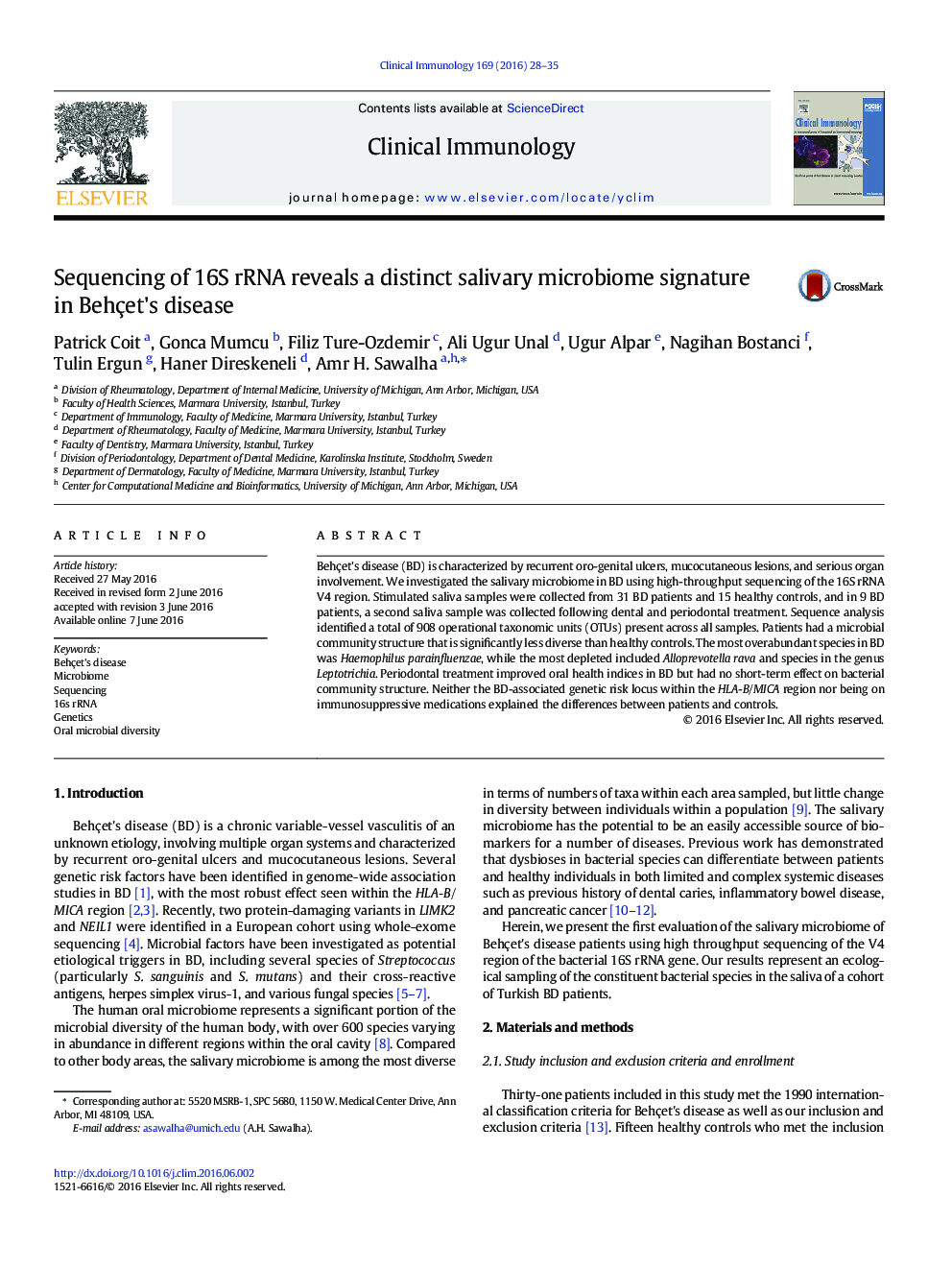| Article ID | Journal | Published Year | Pages | File Type |
|---|---|---|---|---|
| 6086976 | Clinical Immunology | 2016 | 8 Pages |
â¢The salivary microbial community in Behçet's disease (BD) is less diverse than healthy controls.â¢The most overabundant species in BD is Haemophilus parainfluenzae.â¢Periodontal treatment did not change the bacterial community structure in BD.â¢Dysbiosis in BD is not explained by the genetic risk within the HLA-B/MICA locus.
Behçet's disease (BD) is characterized by recurrent oro-genital ulcers, mucocutaneous lesions, and serious organ involvement. We investigated the salivary microbiome in BD using high-throughput sequencing of the 16S rRNA V4 region. Stimulated saliva samples were collected from 31 BD patients and 15 healthy controls, and in 9 BD patients, a second saliva sample was collected following dental and periodontal treatment. Sequence analysis identified a total of 908 operational taxonomic units (OTUs) present across all samples. Patients had a microbial community structure that is significantly less diverse than healthy controls. The most overabundant species in BD was Haemophilus parainfluenzae, while the most depleted included Alloprevotella rava and species in the genus Leptotrichia. Periodontal treatment improved oral health indices in BD but had no short-term effect on bacterial community structure. Neither the BD-associated genetic risk locus within the HLA-B/MICA region nor being on immunosuppressive medications explained the differences between patients and controls.
